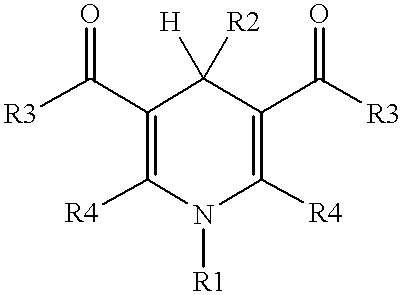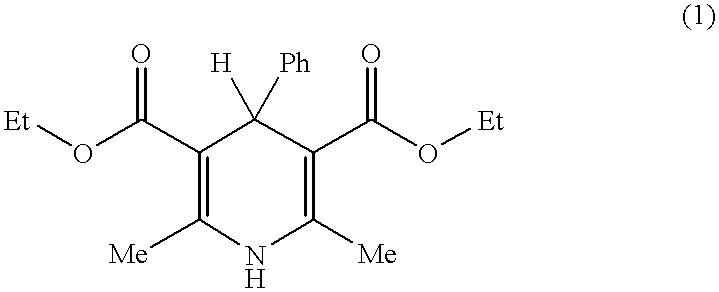Method of preparing a microporous film, and image accepting member
- Summary
- Abstract
- Description
- Claims
- Application Information
AI Technical Summary
Benefits of technology
Problems solved by technology
Method used
Image
Examples
example 1
[0084] A solution of Butvar.TM. B-76 (2.5g) and GAF E735.TM. (5.0g) in MEK (42.5g) was prepared and coated on PET using a wire wound bar at 36 .mu.m wet thickness, then dried at ambient temperature to yield a clear film approximately 3.5 .mu.m thick (coating A). Because GAF E735.TM. comprises 50% by weight ethanol, the coating solution contained equal weights of Butvar.TM. B-76 and NVP polymer, and the MEK:EtOH ratio was 17:1 by weight.
[0085] Coatings B and C were similarly prepared, respectively, from Butvar.TM. B-76 (5g) dissolved in MEK (45g), and GAF E735.TM. (10g) dissolved in MEK (40g).
[0086] A sample of coating A was immersed in cold water for 5 minutes, then left to dry, giving coating D. Coating D was hazy in appearance, whereas A-C were clear, and microscopic analysis of D showed large numbers of pores approximately 1.0-1.5 .mu.m in diameter.
[0087] Samples of A-D were printed with an identical pattern of text using an Epson Stylus 820.TM. ink jet printer and the water-base...
example 2
[0089] This example illustrates the effect of varying the proportions of aprotic solvent and alcohol.
[0090] A series of solutions were prepared of Butvar.TM. B-76 and GAF E735.TM. in mixtures of MEK and ethanol. The total solids content was kept constant (7.3 wt %), as was the ratio of hydrophobic polymer to hydrophilic polymer (2:1 by weight), but the relative proportions of MEK and ethanol were varied. The solutions were coated as in Example 1, dried 3 minutes at 60.degree. C., and washed for 30 sec in distilled water at 15.degree. C. The resulting coatings were then examined by SEM and the average pore size recorded:
2 MEK / EtOH Ratio (w / w) Av. Pore Diameter (.mu.m) 3:1 approx 1.0 1:1 approx 80 1:3 approx 100 pure EtOH (c) nonporous (c) - control, not in accordance with the invention
[0091] Coatings prepared from solutions with a relatively low ethanol content showed large numbers of small pores, of the order of 1 .mu.m in diameter, but as the ethanol content was raised, smaller num...
example 3
[0092] This example illustrates the effect of varying the relative proportions of hydrophobic and hydrophilic polymers.
[0093] A series of coatings were made in which the weight ratio of hydrophobic polymer to hydrophilic polymer varied in the range 2:1 to 1:3. Solutions were prepared with varying amounts of Butvar.TM. B-76 and GAF E735.TM. and sufficient quantities of MEK and additional ethanol to provide a constant total solids content (20 wt %) and a constant MEK / EtOH ratio (3:1 by weight). The solutions were knife-coated on PET at 150 .mu.m wet thickness, dried for 3 minutes at 50.degree. C. to give clear films of ca. 30 .mu.m thickness, then washed for 15 sec in distilled water at 15.degree. C. to form microporous films. SEM analysis revealed that following trend in pore size:
3 Hydrophobic / Hydrophilic ratio (*) Av. Pore diameter (.mu.m) 2:1 <0.1 1:1 approx. 0.1 1:2 approx. 0.7 1:3 approx. 2.0 (*) - weight ratio of hydrophobic polymer to hydrophilic polymer
[0094] A test pattern w...
PUM
| Property | Measurement | Unit |
|---|---|---|
| Percent by mass | aaaaa | aaaaa |
| Percent by mass | aaaaa | aaaaa |
| Angle | aaaaa | aaaaa |
Abstract
Description
Claims
Application Information
 Login to View More
Login to View More - R&D
- Intellectual Property
- Life Sciences
- Materials
- Tech Scout
- Unparalleled Data Quality
- Higher Quality Content
- 60% Fewer Hallucinations
Browse by: Latest US Patents, China's latest patents, Technical Efficacy Thesaurus, Application Domain, Technology Topic, Popular Technical Reports.
© 2025 PatSnap. All rights reserved.Legal|Privacy policy|Modern Slavery Act Transparency Statement|Sitemap|About US| Contact US: help@patsnap.com


